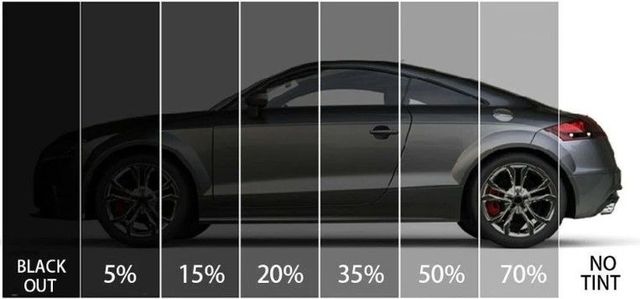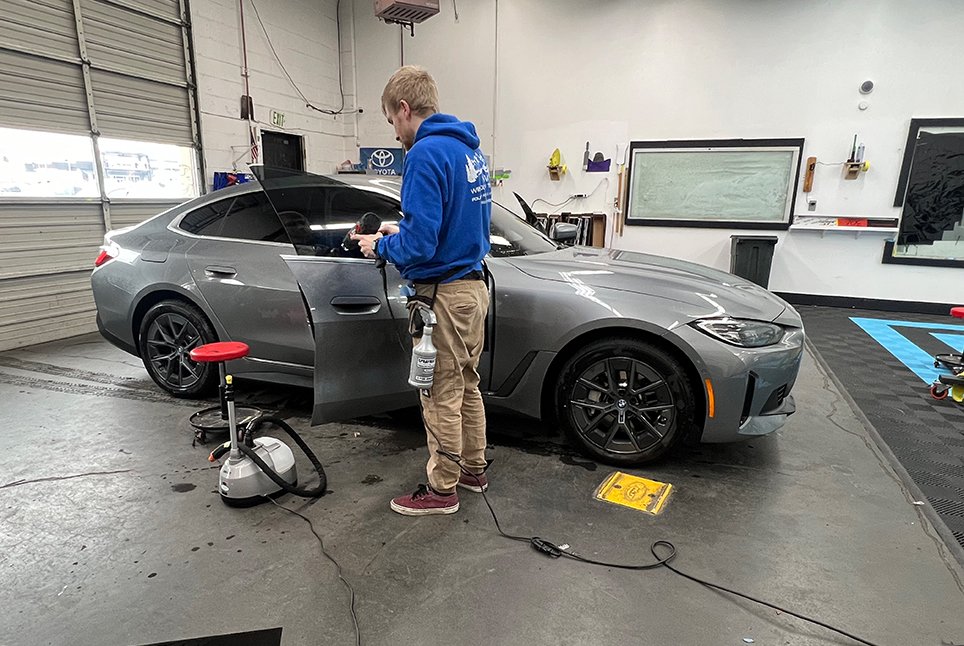Vehicle Window Tinting: Boost Your Cars and truck's Style and Personal privacy
Wiki Article
Home Window Tinting Regulations and Guidelines: What You Required to Know Prior To Tinting Your Vehicle
Prior to proceeding with window tinting for your lorry, it is important to acquaint on your own with the varied legislations and standards that govern this method throughout various states. These guidelines dictate the permissible degrees of color darkness, typically gauged by noticeable light transmission (VLT) percentages, and consist of certain terms for front windscreens targeted at making certain road safety and security. Additionally, specific jurisdictions may provide medical exceptions for people with qualifying conditions. Comprehending these intricacies can conserve you from prospective lawful implications, but what are the specific rules in your state?Introduction of Window Tinting Laws
Home window tinting laws are often subject to variation throughout various jurisdictions, showing regional guidelines and safety and security considerations. These laws determine the permitted degrees of color darkness and reflectiveness on automobile home windows, ensuring that drivers keep adequate visibility while additionally safeguarding versus harmful UV rays and warm.Many laws identify window tinting based on the Visible Light Transmission (VLT) percent, which shows the quantity of light that can go through the window. Generally, reduced VLT percents symbolize darker tints. Regulations usually differentiate between the front, side, and rear home windows, with stricter limitations put on the front windshield to improve safety for both the vehicle driver and various other roadway users.
Additionally, some territories impose restrictions on the reflectivity of the tint, avoiding extreme glare that might hinder visibility. Exemptions to these regulations may exist for people with certain clinical conditions requiring added sun defense. Compliance with window tinting laws is essential, as infractions can result in penalties, mandatory elimination of the color, and possible increases in insurance premiums. Therefore, it is important for automobile proprietors to acquaint themselves with local laws prior to proceeding with home window tinting setups.
State-by-State Tint Laws
Comprehending the specific window tinting policies in each state is important for automobile proprietors seeking to follow the legislation. Each state in the united state has actually developed its own collection of policies controling home window tinting, which can vary considerably. These policies frequently determine the allowed degrees of color darkness, the types of home windows that can be tinted, and any clinical exemptions that might apply.For circumstances, states like The golden state have rigid limitations on tint darkness for front home windows, while others, such as New Mexico, might permit darker tints. Furthermore, specific states mandate certain exposure portions for numerous home windows, including the windshield, front side windows, and back home windows. It is critical for auto owners to acquaint themselves with their state's laws to avoid potential fines or charges.
Additionally, some states might require a qualification sticker to be put on tinted home windows, showing compliance with state laws. Failing to abide by these guidelines not just takes the chance of lawful consequences but can likewise affect security and exposure while driving. For that reason, car owners should conduct detailed study or consult neighborhood authorities to ensure complete understanding and conformity with state-by-state color laws.
Allowed Tint Types and levels
Many lorry owners might be shocked to find out that allowed tint degrees and kinds differ commonly across various states. Each state has established its own regulations pertaining to the allowable darkness and reflectivity of home window color, typically measured by Visible Light Transmission (VLT) percentages. VLT describes the quantity of light that can go through the tinted home windows; hence, a lower portion shows a darker color.
Moreover, the sorts of color materials permitted can differ, with some states prohibiting metal or mirror-like coatings. It is essential for vehicle owners to familiarize themselves with their state's specific legislations to make sure compliance. Non-compliance can cause penalties, compulsory removal of the color, or other legal effects, making it important to understand these regulations prior to waging installation.
Medical Exceptions for Tinting
While not all states give allocations for clinical exceptions regarding home window tinting, those that do acknowledge the need for specific people to improve exposure and comfort because of clinical problems. Various medical problems, such as lupus, skin cancer, and certain eye problems, can render individuals specifically conscious sunshine. These individuals might require darker colors to protect themselves from dangerous UV rays and glare.
It is essential to keep in mind that despite a clinical exemption, there may still be constraints on the degree of tint permitted. Conformity with state legislations makes sure that people are both safeguarded and within legal limits. Those thinking about medical exemptions need to call their regional Division of Motor Automobiles or equivalent authority to understand the treatments and needs necessary to request an exception properly.
Charges for Non-Compliance
Falling short to adhere to window tinting legislations can bring about significant charges, which differ by state. Legislation enforcement companies are equipped to provide citations for lorries that do not stick to the defined tinting policies. These penalties generally consist of penalties, which can range from modest quantities to several hundred dollars, relying on the seriousness of the offense and the state concerned.In some territories, duplicated offenses may result in rising fines or additional penalties, such as compulsory court appearances. Additionally, non-compliance may require the elimination of illegal tinting, frequently at the owner's cost. In severe situations, regular transgressors might face suspension of their car enrollment up until compliance is attained.
Furthermore, insurance coverage implications may occur from obtaining numerous citations for window color offenses. Insurance firms might see such violations as a sign of riskier habits, potentially bring about increased premiums or difficulty in protection.
To stay clear of these fines, it is critical for vehicle owners to acquaint themselves with their click here for more local window tinting laws and make sure that their automobile complies (Window Tinting). This aggressive strategy not only prevents legal ramifications but additionally advertises road safety
Conclusion

A lot of guidelines categorize window tinting based on the Visible Light Transmission (VLT) percentage, which shows the amount of light that can pass through the home window. Conformity with home window tinting laws is important, as violations can result in fines, obligatory elimination of the color, and possible rises in insurance premiums.Understanding the particular window tinting guidelines in each state is vital for vehicle owners looking for to comply with the law. These guidelines often determine the permitted levels of color darkness, the kinds of windows that can be tinted, and any kind of medical exceptions that may use.
For instance, states like California have rigid limitations on color darkness for front home windows, while others, such as New Mexico, may allow darker colors.
Report this wiki page